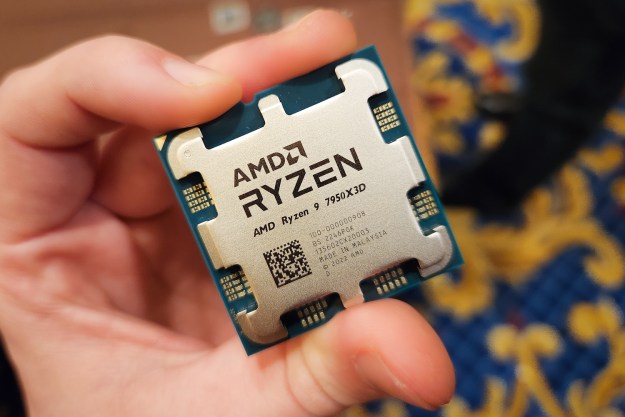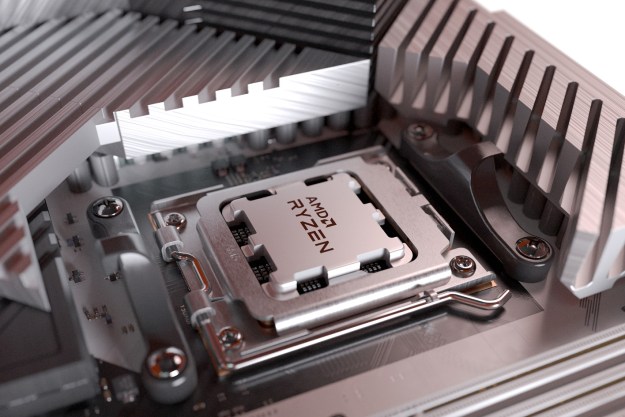AMD’s second-generation Ryzen processors for the desktop are now available to purchase. As seen in previously leaked specifications, there are only four chips based on the company’s refined Zen CPU design, dubbed as Zen Plus (aka Zen+). All four support the company’s new X470 motherboard chipset although they will work on the current 300 Series chipsets, too.
Here they are:
| Ryzen 7 2700X | Ryzen 7 2700 | Ryzen 5 2600X | Ryzen 5 2600 | |
| Cores: |
8 |
8 |
6 |
6 |
| Threads: |
16 |
16 |
12 |
12 |
| Base speed: |
3.7GHz |
3.2GHz |
3.6GHz |
3.4GHz |
| Boost speed: |
4.3GHz |
4.1GHz |
4.2GHz |
3.9GHz |
| Cache: |
20MB |
20MB |
19MB |
19MB |
| Power draw: |
105 watts |
65 watts |
95 watts |
65 watts |
| Cooler: |
Wraith Prism |
Wraith Spire |
Wraith Spire |
Wraith Stealth |
| Price: | ||||
| Availability: |
Now |
Now |
Now |
Now |
While Intel boasts about bringing six-core processors to the mainstream audience, AMD already has you covered with eight-core chips for a low price. Intel will supposedly offer eight-core variants later this year based on its current eighth-generation “Coffee Lake” design, but until then, AMD is still ahead of the core-counting game.
As shown above, the Ryzen 7 2700X has a nice performance increase over the first-generation Ryzen 7 1700X chip with a 300MHz higher base speed, and a 500MHz higher boost speed. But it also requires a bit more power, consuming 105 watts versus the former chip’s 95 watts. Meanwhile, the power consumption of the Ryzen 7 2700 stays the same compared to the first-generation chip despite a 200MHz boost in the base speed and a 400MHz boost in the maximum speed.
On the Ryzen 5 front, the Ryzen 5 2600X replaces the current Ryzen 5 1600X using the same power requirement and base speed but provides a 200MHz boost in the maximum speed and a higher amount of cache (19MB vs. 16MB). Replacing the Ryzen 5 1600 is AMD’s new Ryzen 5 2600 chip with a 200MHz higher base speed, and a 300MHz higher maximum speed while drawing the same amount of power (65 watts).
What we don’t see in the new mix are replacements for the Ryzen 5 1500X, the Ryzen 5 1400, and the Ryzen 7 1800X processors, nor did AMD reveal Ryzen 3 replacements. There is a good chance AMD may shove its Ryzen 7 1800X successor under its upcoming Threadripper refresh while the Ryzen 3 replacements will come later this year. For now, AMD appears to be keeping the CPU options a bit more refined than the first-generation launch.
Of course, the four new processors sit just fine in current motherboards with the AM4 CPU socket. But to take full advantage of the new chips, you might want to consider swapping out the motherboard with new solutions packing AMD’s latest X470 chipset. The company says X470 has an improved power structure to handle higher clocks on the Zen+ design.
The chipset also supports AMD’s new StoreMI technology. In the company’s test system, World of Warcraft loaded in 41.37 seconds when moving from the character select screen to the virtual world without StoreMI, and 14.74 seconds with StoreMI enabled.
All four processors are available on Amazon, Newegg, and other online retailers now for a starting price of $199.
Updated on April 19: The new Ryzen processors are now available.
Editors' Recommendations
- AMD’s upcoming APUs might destroy your GPU
- 4 CPUs you should buy instead of the Ryzen 7 7800X3D
- AMD’s next-gen CPUs are much closer than we thought
- AMD makes older PCs more upgradeable once again
- The one AMD 3D V-Cache processor you should avoid at all costs



